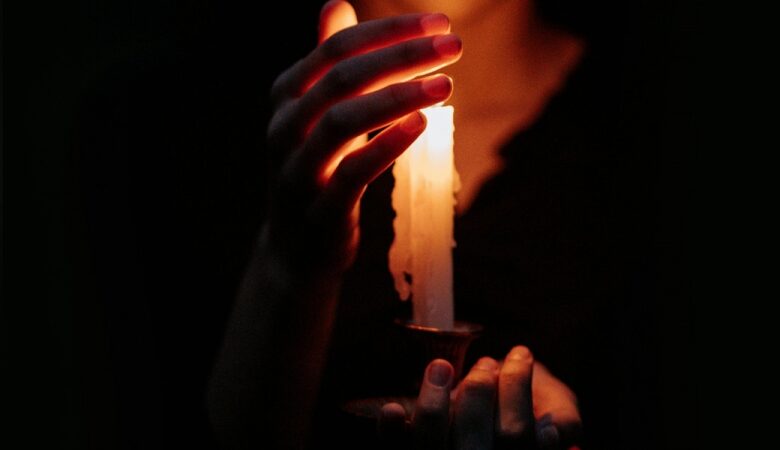How Invocation Works In Ghost Hunting & Beyond

Invocation is a practice deeply rooted in the human desire to connect with forces beyond our understanding, whether for guidance, assistance, or knowledge. While the specifics can vary greatly across different traditions, the fundamental concept of calling upon entities beyond the human realm remains a common thread.
The word itself is Latin in origin and comes from “invocare.” The “in” prefix means “towards” or “upon,” and “vocare” means “to call,” so it translates to “to call upon” or “to summon.” In religious and spiritual contexts, invocation has come to mean a prayer or plea to a higher power, while in a more secular sense, it can refer to any act of calling upon someone or something for support or inspiration.
Invocation should not be confused with evocation, which is more about calling forth a spirit, demon, or other entity to interact and negotiate with in order to acquire knowledge, assistance, or accomplishing a specific task.
During the medieval period, the practice of invocation became intertwined with the occult and was often viewed with suspicion by the church and secular authorities. Perhaps this is why, even to this day, there is a misconception that invocation is dangerous or that it opens a ‘portal’ to negative entities. While some would agree that inviting communication with the unknown carries its risks, others believe that with the right intentions and protections in place, invocation can be a safe and effective way to experiment with the paranormal.
People choose to invoke supernatural entities for a variety of reasons, but perhaps the most common reason is simply to communicate with the other side. Many are curious about the afterlife, spirits, or the existence of entities beyond our normal perception. By invoking these beings, individuals hope to gain insight, answers, or evidence of the supernatural.
Demonologists study demons and other malevolent entities from a theological, historical, or psychological perspective. Their work often involves understanding the lore, behaviour, and characteristics of these beings, as well as the methods used to confront or communicate with them. Some demonologists may invoke entities as part of their research to gain a deeper understanding of these beings.
While many demonologists warn of the potential dangers associated with summoning malevolent spirits or demons, for many, invocation is nothing more than entertainment. In fact, you yourself might be guilty of thrill-seeking through invocation if you’ve ever looked into a mirror and called out “bloody Mary.” This well-known children’s game can be considered a form of invocation, though it is far removed from the serious religious or spiritual practices found in traditions like Wicca or ceremonial magic.
Bloody Mary aside, the process of performing an invocation can vary significantly depending on the cultural background, personal beliefs, and specific goals of those conducting it, but usually involves some kind of moment of focus or meditation with the aim of setting a specific intention for the session. This could be as simple as asking any spirits present to communicate or as specific as calling upon a known entity associated with the location where the session is being conducted.
The person leading the invocation might then begin to speak aloud, formally inviting any spirits or entities to make themselves known. They might ask for signs, responses to questions, or direct communication through the devices set up around the area. It’s common to start with general questions before moving on to more specific ones, allowing time for responses between each.
Once the participants feel that they have either received enough communication or that the session has naturally come to an end, they will close the session. This is an important step and involves thanking any spirits or entities that may have communicated and asking them to depart peacefully.
In esoteric traditions like the practice of ceremonial magic, invocation takes on a more structured form with precise rituals, symbols, and languages to call upon angels, demons, or other spiritual entities. The purpose of these invocations could range from personal enlightenment and spiritual development to achieving specific magical outcomes.
Invocation might seem mystical or magical, but it’s a common part of ghost hunts in their most basic form. Calling out to any spirits that might be present, welcoming them, and encouraging them to reveal their presence is a form of informal invocation used to initiate communication by inviting spirits to interact, speak, or manifest in some way.
Many who practice invocations as part of paranormal investigations firmly believe that they work based on experiences, such as feeling a presence, receiving messages, or witnessing unexplainable phenomena following an invocation. Skeptics, on the other hand, argue that there is no scientific evidence to support the effectiveness of invocation in contacting supernatural entities.
Skeptics point to the lack of empirical evidence and the principles of scientific methodology, which call for measurable and repeatable observations. Since the outcomes of invocations often cannot be measured or replicated under controlled conditions, skeptics maintain that there’s no basis to conclude that the practice is effective.
Skeptics also argue that experiences reported during invocations could be explained by natural or psychological factors. For instance, auditory or visual anomalies might result from pareidolia, where the brain interprets random patterns as meaningful, or from the power of suggestion impacting sensory perceptions. The role of confirmation bias could also play a part, as investigators may interpret ambiguous events as confirmation of their pre-existing beliefs.
Critics also state that natural phenomena or coincidental events are often misinterpreted as paranormal following an invocation session. Noises, electronic disturbances, or temperature changes could have rational explanations, yet they are attributed to spirits following an invocation session.



